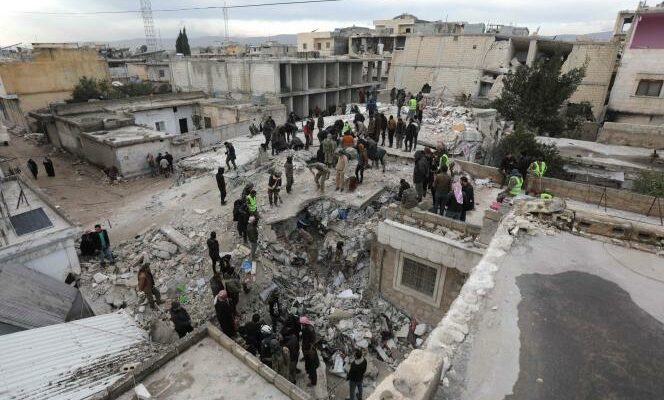More than 2,500 dead and thousands injured: Syrians bruised by twelve years of war are mourning the victims of the violent earthquake that struck down the north and west of the country on Monday, February 6 at dawn. The rebellious North-West is bereaved by the most important human losses. There are half-miracles in the horror: in Jandairis, a small town under opposition control, a newborn baby was found alive, still attached by the umbilical cord to his mother, who did not not survived. Forty-eight hours after the disaster, the voices of survivors crying out for help have died down. The toll will rise further.
The power of the earthquake (the first shock was of a magnitude of 7.8) and the proximity to the epicenter, located in Turkey, were devastating. Thousands of buildings have completely or partially collapsed in the provinces of Idlib, Aleppo and Latakia. The earthquake, which surprised residents in their sleep, affected a country where the habitat was devastated by the conflict: destruction and weakening of structures, emergency construction…
In a first mapping of the destruction caused by the earthquake, published on Tuesday, the site Syria Report presents these vulnerabilities: in the rebel North-West, the border strip with Turkey has been the most affected. According to local rescue workers, 360 buildings have completely collapsed. In the neighboring region north of Aleppo, under the control of pro-Turkish insurgent groups, houses blown up by the earthquake had recently been hastily built to accommodate the influx of displaced people in need of shelter.
Lack of alternative
In the city of Aleppo, on government territory, the majority of the 38 destroyed buildings are located in the eastern part, a former rebel area already heavily damaged by aerial bombardment by pro-regime forces – Aleppo was the site of fighting between the army and rebels during four years, between 2012 and 2016. In the province of Tartous, under government control, old housing did not resist the violent shock. Residential buildings also collapsed in the regions of Latakia and Hama.
“At present, it is difficult to establish the exact reasons why some buildings collapsed and not others.underlines the architect-urban planner Valérie Clerc, researcher at the Research Institute for Development (IRD), who has lived and worked in Syria. The Syrian anti-seismic rules enacted in the early 2000s are not designed to deal with such a very rare major earthquake, even if the risk was real. Buildings, both formal and informal – informal buildings housed an average of 30% of the inhabitants of the main Syrian cities in 2011 – have different levels of solidity whose resistance to an exceptional earthquake is difficult to anticipate. »
You have 34.36% of this article left to read. The following is for subscribers only.
